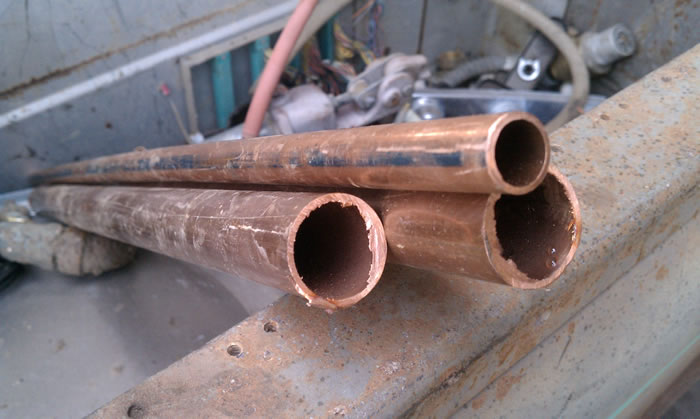For dumpster, container, and large loads please call
For dumpster, container, and large loads please call

If you recently got involved in scrap metal recycling, there are specific topics you should know well so you can quickly go through the recycling process. Some of these topics include knowing where to find scrap metal, learning which types of metal are the most valuable, and learning the recycling steps. In this article, we will go over the two main metal groups- ferrous and non-ferrous.
The iron content is the leading property that distinguishes ferrous metals from non-ferrous metals. Ferrous metals include iron, while non-ferrous metals don’t. Historically, non-ferrous metals have been around longer than ferrous metals. If you want to differentiate between the two, you can grab a piece of magnet and see if that attaches to your metal. If it does, it’s ferrous. If it doesn’t, it’s non-ferrous.
As we mentioned already, ferrous metals include iron and are magnetic. In addition to this, they include high durability and show strength, so they are preferred in various industries. On the other hand, non-ferrous metals show great malleability and conductivity. They are excellent in other sectors that require shaping metals. Due to their carbon content, ferrous metals are more prone to corrosion. Finally, non-ferrous metals are more expensive than ferrous metals.
Common ferrous metals include steel, stainless steel, cast, and wrought iron. Steel is beneficial for the construction and manufacturing industries while cast iron is used for various pipes and machines.
Common non-ferrous metals include aluminum, copper, lead, tin, zinc, and nickel. Aluminum is used for food cans and cookware. Copper is known for its conductive properties, so it’s used in the electrical industry. Lead is used in the batteries and construction industry. Tin and zinc are used primarily to prevent corrosion. Finally, nickel hashas a strong composition and can resist very high temperatures so that it can be used in various industries, especially batteries.
Why is it important to learn the difference between ferrous and non-ferrous metals and know common examples? Well, it’s to help you with your budget. If you are in the scrap metal recycling business, you have probably heard of this before: separating various metals you own into these two categories will help you immensely to sell your metal and to get a higher price. You will earn less money if you go to a scrap yard with all your metals in one pile on the spot. So, to save yourself the expense, spare some time and separate your metals as ferrous and non-ferrous. Another critical point to remember if you want better prices is finding the right scrap metal company. If you are looking for a reliable scrap metal company that offers excellent prices, your search ends now. M&M Recycling is an experienced, reliable scrap metal company that accepts various metals and offers excellent prices. Contact us today to learn more about our prices and services!